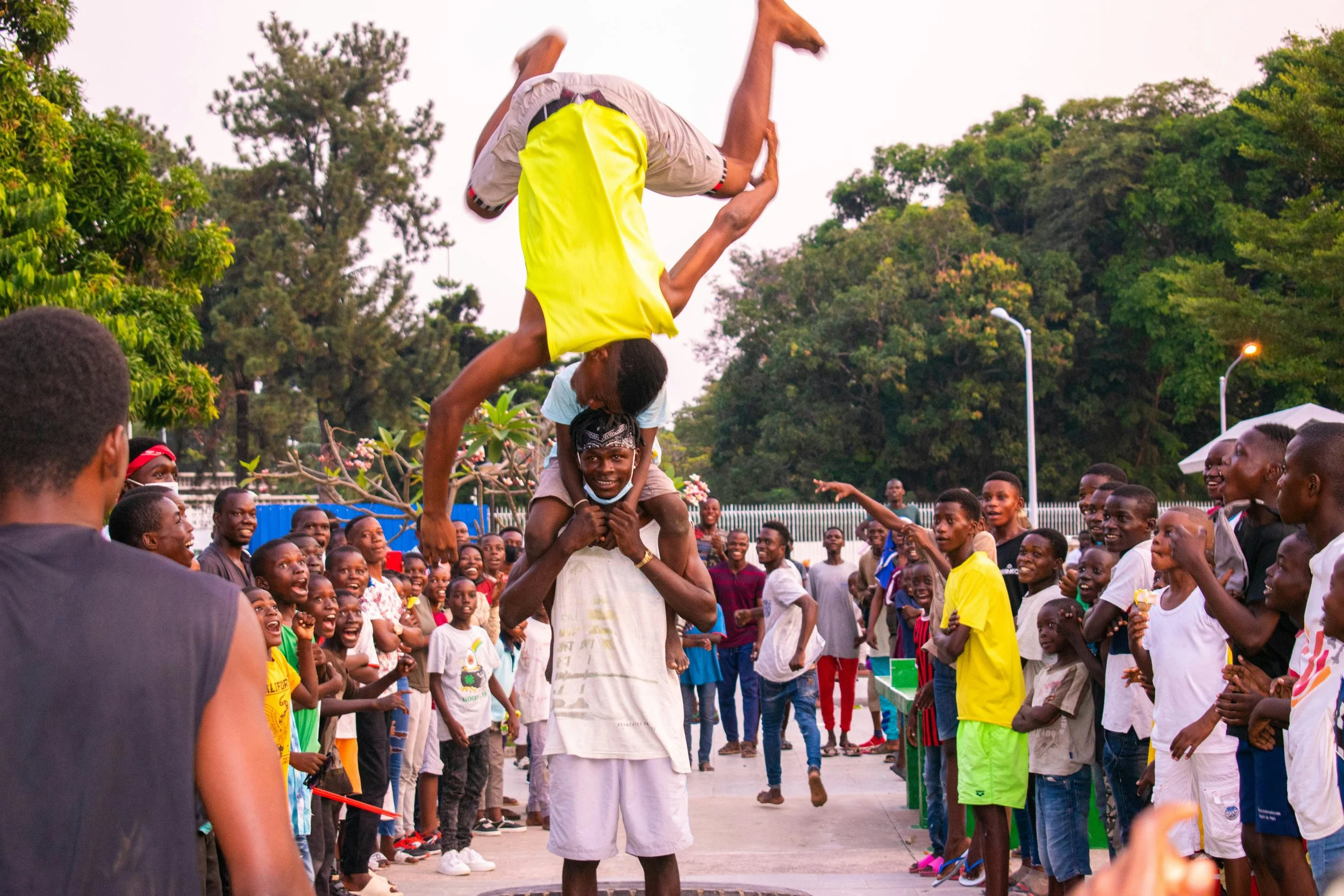Exploring Congo Brazzaville
Case De Gaulle, Brazzaville, République du Congo
Nestled in the heart of Central Africa, the Republic of Congo often called Congo- Brazzaville, is a nation that dances to the rhythm of culture, creativity, and resilience. Often overshadowed by its larger neighbor (the Democratic Republic of Congo), Congo-Brazzaville is a treasure trove of untapped tourism potential, colorful fashion, and warm, diverse communities.
Congo-Brazzaville is home to over 70 ethnic groups, with the Kongo, Teke, and M’Bochi being the most prominent. This diversity fuels a rich tradition of music, dance, storytelling, and communal life. From drumming circles in the capital to the serene rituals of rural communities, Congolese cultural life is deeply spiritual and expressive.
Languages: Lingua Franca Meets Local Flavor
With over 200 languages spoken in the country, French remains the nation’s official language. However, Kituba (Kikongo) and Lingala are widely spoken and celebrated. These local languages dominate the streets, airwaves, and marketplaces, reminding visitors that this is a nation where identity is proudly preserved.
La Sape: Congo’s Fashion Revolution
In Brazzaville, fashion is more than style, it’s a movement. La Sape (short for Société des Ambianceurs et des Personnes Élégantes) is a flamboyant fashion culture where men (called Sapeurs) wear high-end designer clothes in bold colors and sharp tailoring. Beyond the glamour, La Sape is a form of peaceful resistance, social commentary, and self-expression that turns sidewalks into runways. La Sape originated in 1920s Brazzaville as a sartorial form of anti‑colonial resistance and satire, evolving into a proud cultural movement for elegance and identity in the face of poverty.
Sapeurs often come from low‑income jobs but embrace high fashion as a meaningful form of self-expression and dignified rebellion. Many Sapeurs treat every outing, especially weekends as an occasion to display their fashion, often parading in public spaces, markets, or bars. So in a way, La Sape is "celebrated" weekly. Local Sapeur groups organize fashion competitions, street parades, and style battles during community events or national holidays. These events may happen several times a year, particularly; Independence Day (August 15) in Congo-Brazzaville, during urban festivals such as the Luminatio Festival and weddings and also around Christmas and New Year, when style shows peak
Cuisine
Congo’s food scene is a delicious fusion of river, forest, and farm. Popular dishes enjoyed by the people are heavy on chicken, fish, cassava leaves, peanuts and many more. Poulet Moambe is chicken stewed in a rich palm butter sauce. This is also considered the country’s national dish. Saka-saka is cassava leaves cooked with peanuts, fish, and palm oil. Liboké is seasoned fish or meat wrapped in banana leaves and grilled while Chikwangue is fermented cassava loaf served as a staple alongside meals. Food here is often slow-cooked, communal, and packed with flavor.
Top Tourist Spots to Explore
Aside from its unique culture and cuisines, Congo-Brazzaville offers an exciting mix of urban buzz and untouched nature. The Odzala- Kokoua National Park is often referred to as one of Africa’s oldest parks. Established in 1935, this park covers vast rainforest areas with approximately 4,500 plant species, 440 bird species, and 100 mammal species, including gorillas, forest elephants, and chimpanzees
Basilique Sainte-Anne du Congo is an architectural gem in Brazzaville, blending Catholic roots with local design. Les Rapides is a series of rushing river rapids perfect for scenic views and photo ops. Poto-Poto Market is Congo Brazzaville’s iconic textile market, known for its vibrant fabrics and artisan crafts. Loufoulakari Falls is a majestic waterfall perfect for hikers and nature lovers. Whatever you need to explore as a tourist, Congo Brazzaville has it all.
Here are a few travel tips to consider before travelling to the country. Also these are the best times to visit Congo Brazzaville:
January to February - Short dry Season
March to May - Short rainy season
June to September - Long dry season
October to December - Long rainy season
Congo and Ghana: Unexpected Similarities
Though geographically distant, Congo and Ghana share similarities from warm hospitality and rich storytelling traditions to strong diasporic identities and fashion-forward youth movements. Both nations celebrate independence, creativity, and resilience in their own vibrant ways.
Why Congo-Brazzaville Deserves a Spot on Your Travel List
Congo-Brazzaville is a destination for the curious explorers seeking authenticity, culture, and the road less traveled. Whether you're mesmerized by the elegance of La Sape or eager to witness gorillas in the wild, the Congo offers unforgettable experiences that challenge stereotypes and inspire connection.
Plan your visit. Support local culture. And let Congo surprise you.
